Understanding Alcohol Addiction
Learn About Alcohol Addiction
The most commonly abused substance in the United States, alcohol is an addictive central nervous system depressant that is created by fermenting yeast, starches, and sugars. The abuse of alcohol can be problematic both as a single occurrence and as a chronic behavior.
Alcohol intoxication can cause lowered inhibitions, diminished judgment, and impaired coordination, which can lead to myriad negative outcomes. As a chronic behavior, alcohol abuse can put an individual at risk for a host of physical and emotional problems, including the development of alcohol use disorder, or AUD. According to the Diagnostic and Statistical Manual of Mental Disorders, Fifth Edition (or DSM-5), an alcohol use disorder may be present if an individual meets two or more of the following criteria within a 12-month period of time:
- Having strong desires or cravings to use alcohol
- Using alcohol in increasingly larger amounts or over longer periods of time than intended
- Persistently desiring to reduce or control one’s drinking, yet being unsuccessful when attempting to do so
- Spending a considerable amount acquiring, using, or recovering from the effects of alcohol
- Failing to fulfill obligations in school, at work, or at home because of alcohol use
- Using alcohol even after having experiencing negative social or interpersonal problems as a result of alcohol use
- Using alcohol despite having experienced physical or psychological problems as a result of alcohol use
- Abandoning or decreasing participation in social, occupational, or recreational activities because of alcohol use
- Using alcohol in situations where it is physically hazardous to do so
- Developing tolerance, or needing to consume larger amounts of alcohol to achieve the desired effect
- Experiencing withdrawal symptoms when ceasing or reducing one’s alcohol use
The good news is that alcohol use disorder, which is often also referred to as alcoholism, is a treatable condition. With effective professional treatment, individuals who are abusing alcohol or who have developed alcohol use disorder can overcome their dependence on this dangerous drug and make the changes that will allow them to live healthier and more productive lives.
Statistics
Alcohol Addiction Statistics
The National Institute on Alcohol Abuse and Alcoholism (NIAAA) reports that among adults ages 18 and above in the United States, more than 85% have used alcohol at least once in their lives, and that about 30% have engaged in either binge drinking or heavy drinking in the past 30 days.
Experts estimate that more than 10 million men and nearly six million women in the U.S. meet the criteria for alcohol use disorder, but less than 1% of these people have received treatment for their disorder.
Alcohol-related death is the third leading preventable cause of death in the United States. Globally, alcohol is involved in more than 3 million annual deaths and has been linked to more than 200 diseases and injury-related health problems.
Causes and Risk Factors
Causes and Risk Factors for Alcohol Addiction
Considerable research suggests that both genetics and environment can be contributing factors to the development of alcohol abuse and alcohol use disorder.
Genetic: Having a family history of alcohol abuse puts a person at increased risk for engaging in similar behavior. When one’s parents or siblings have had problems with alcohol, that risk is magnified. Recent advancements in genetic research has led to the identification of several genes and gene clusters that scientists believe play key roles in determining whether or not a person is likely to become addicted to alcohol or another drug.
Environmental: Alcohol abuse and alcohol use disorder within in one’s family can also be environmental influences. Individuals who grew up among family members who regularly abused alcohol are much more likely to also engage in this behavior than are people who were raised in alcohol-free households. Having been abused, assaulted, or otherwise traumatized can also increase a person’s risk for abusing alcohol. Other environmental factors include poverty, living in an area where alcohol is readily available and commonly abused, and experiencing significant stresses and pressures.
Risk Factors:
- Being male
- Family history of substance abuse and/or mental illness
- Personal history of substance abuse and/or mental illness
- Abuse, neglect, assault, or other trauma
- Poor self-esteem or self-image
- Poor stress management capabilities
- Poverty
- Associating with peers who engage in alcohol abuse
Signs and Symptoms
Signs and Symptoms of Alcohol Addiction
Depending upon the nature and severity of a person’s problems with alcohol, alcohol abuse and alcohol use disorder may reveal themselves via a variety of signs and symptoms, including the following:
Behavioral symptoms:
- Frequent unexplained absences from work or school
- Decline in performance at work or in school
- Deception or secretiveness regarding one’s drinking habits
- Drinking early in the day or throughout the day
- Increased interpersonal conflicts and unprovoked aggressiveness
Physical symptoms:
- Vision problems
- Excessive sweating
- Loss of appetite
- Nausea and vomiting
- Abdominal cramps
- Gastritis
- Reddened nose and cheeks
- Jaundice
- Headaches
- Insomnia
- Slurred speech
Cognitive symptoms:
- Inability to focus or concentrate
- Impaired problem-solving skills
- Poor judgment
- Short-term amnesia
- Hallucinations
Psychosocial symptoms:
- Anhedonia
- Depression
- Nervousness, irritability, and/or agitation
- Suicidal ideation
- Mood swings
- Psychosis
- Withdrawal from family and friends
Effects
Effects of Alcohol Addiction
Untreated chronic alcohol abuse and alcohol use disorder can lead to devastating effects, some of which may be irreversible. The following are among the more common negative outcomes that are associated with the long-term abuse of alcohol:
- Amenorrhea
- Kidney inflammation
- Heart disease
- Anemia
- Muscle weakness
- Breathing problems
- Recurring chest infections
- Pneumonia
- Ulcers
- Gastrointestinal bleeding
- Pancreatitis
- Cirrhosis of the liver
- Strained or destroyed interpersonal relationships
- Job loss and chronic unemployment
- Family dysfunction, separation, and divorce
- Legal problems
Co-Occurring Disorders
Alcohol Addiction and Co-Occurring Disorders
The following are among the disorders that are commonly experienced by individuals who are also dealing with alcohol use disorder:
- ADHD (attention-deficit/hyperactivity disorder)
- PTSD (posttraumatic stress disorder)
- OCD (obsessive-compulsive disorder)
- Anxiety disorders
- Bipolar disorder
- Depressive disorders
Withdrawal and Overdose
Effects of Alcohol Withdrawal and Overdose
Effects of alcohol withdrawal: Withdrawal occurs when a person who has become dependent upon a substance either drastically reduces or completely stops using that substance. People who experience withdrawal symptoms such as the following should seek professional help to ensure that they are able to stop using alcohol in a safe manner:
- Anxiety
- Tremors, twitches, and other signs of shakiness
- Excessive sweating
- Increased body temperature
- Hallucinations
- Confusion and/or disorientation
- Nausea and vomiting
- Seizures
- Irregular heartbeat
Effects of alcohol overdose: Drinking more alcohol than a person’s body can safely metabolize can result in alcohol overdose. This can occur the first time a person drinks or after years of chronic alcohol abuse. Alcohol overdose can cause permanent damage, including death. If a person who has been drinking heavily demonstrates the following symptoms of overdose, medical attention should be sought immediately:
- Slow and/or irregular breathing
- Hypothermia (severely low body temperature)
- Extremely pale or bluish skin
- Cold and clammy skin
- Mental confusion
- Seizure
- Unconsciousness
- Coma






